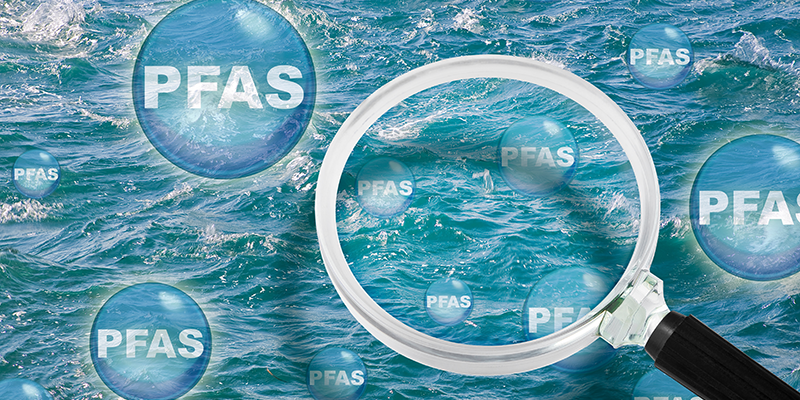What are PFAS?
The organic chemicals PFAS have been in the news a lot lately. They have sparked a wave of litigation in the U.S. chemical industry against PFAS manufacturers in numerous states. What are they, and how concerned should we be about them in our drinking water?
The first PFAS chemicals were manufactured or invented, so to speak, in the 1930’s. There are now around 4700 chemicals in the PFAS family! These organic chemicals have a couple of things in common: they are all artificial and contain linked chains of carbon and fluorine. (A big red flag should go up immediately.)
Carbon and fluorine bonds are powerful, so they don’t degrade quickly. In other words, they stick around for a long time, not only in the environment but also in the human body. They are very stable in water. That is why they are sometimes referred to as “forever chemicals”!
Where are PFAS Found?
Because PFAS can repel oil, water, and grease, they are found in consumer products (like non-stick cookware) and commercial and military products (like firefighting foam).
The manufacturing of the most common PFAS, perfluoro-octanoic acid (PFOA) and perfluoro-octane sulfonate (PFOS), was voluntarily phased out in the early 2000s. Unfortunately, PFAS is still present in many everyday products we buy.
Because of the widespread use of these chemicals for decades, virtually all people have been exposed to them to some extent through the food we eat, the water we drink, and even the contaminated air we breathe. Scientific studies now estimate that 98% of Americans have detectable levels of PFAS in their blood!
What does PFAS do to the human body?
So, what damage can PFAS cause in the human body?
Research shows that damages include elevated cholesterol, thyroid disease, damage to and possibly cancer of the liver and kidneys, low fertility, low birth weights, testicular cancer, and perhaps several other suspected effects. Research suggests that exposure to PFAS may even suppress the immune systems of young children, potentially making vaccines less effective!
Scientists are less sure about the health effects of newer PFAS that have replaced PFOS and PFOA and the effects of lower exposure. Despite the remaining uncertainty, scientists have found that PFAS affects “every major organ in the human body,” says Elsie Sunderland, a PFAS researcher at the Harvard T.H. Chan School of Public Health.
Does Distillation Remove PFAS from My Drinking Water?
Yes, distillation does remove PFAS from drinking water.
Based on scientific data, we had projected that distilling water containing PFAS would remove the PFAS, but we wanted proof from a certified reliable laboratory.
A long-time Pure Water Distributor, Phil Festa, gathered samples of tap water from a hospital in New Jersey containing PFAS and sent them to the National Testing Laboratory in Ypsilanti, Michigan. Chemists identified that these water samples contained seven different PFAS, varying from 3 to 26 ng/L (Nanograms per Liter). One nanogram per Liter equals one ppt (Parts per trillion). The standard for total PFAS in New Jersey is 13.0 ppt.
Based on 3rd party lab testing results, all of our Pure Water distillers remove over 99.9% of all PFASs, including PFOA and PFOS.
Boiling water containing PFAS will not release them. The boiling points of PFAS are incredibly high compared to the boiling point of water (100 degrees Celsius, or 212 degrees Fahrenheit at sea level). The PFAS will be left behind in the water distiller’s boiling tank.








Thank you for that great news about removing PFAS from our distilled water!
I have the mini classic countertop and have had it about a year, and my question regards the PFAS staying in the boiling tank, as mentioned by this article. Will it eventually accumulate in the tank to the point that the distiller is no longer able to remove it? How will we remove the PFAS from our boiling tanks? I think if the Lumen were able to clean it, we would no longer have a PFAS problem, so I’m guessing it won’t remove it.
You dump out the residual water containing the PFAS before starting each cycle.